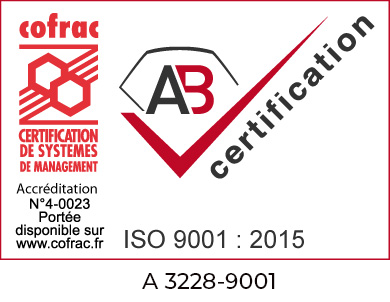Profile
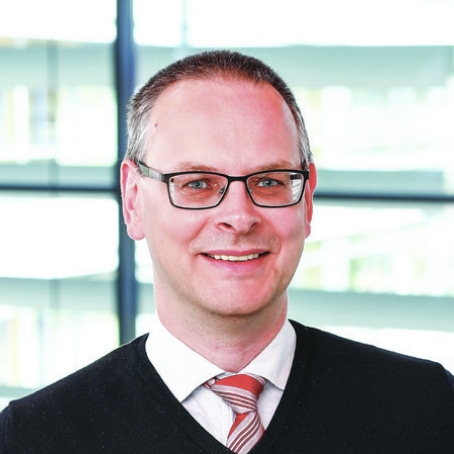
The Municipal Clinic of Karlsruhe is the largest hospital in the central upper Rhine region. It is a maximum care teaching hospital for the University of Freiburg, with more than 4,300 employees.
The facility includes the Pathological Institute which plays an important role for the Clinic as a whole, as well as hospitals and general practitioners in the area. Prof. Dr. med. Thomas Rüdiger leads the Pathological Institute. His team of two senior physicians, five specialists, a certified biologist, seventeen medical-technical assistants and six secretaries focus on generating efficient and precise diagnoses every day, to ensure that patients receive the best possible treatment.
The main task of the Institute involves microscopic evaluation of tissue following laboratory processing through a variety of methods. The investigated substances include surgical specimens, excisions and biopsies, or organs and cellular material obtained through biopsies of organ and body fluids or smears of organ surfaces. The Institiute serves specialists from all medical areas of the Clinic.
Histological and cytological investigations form the majority of the daily work for the Pathological Institute’s team, however, they also carry out molecular-genetic investigations and autopsies connected with pathology.
Specialized areas of the Pathology Department of the Municipal Clinic Karlsruhe include haematopathology, gynaecological and uropathology as well as gastroenterological, head-and-throat pathology, and dermatological, paido-, and neuropathology.
Pathologists also help to guide treatment methods. They closely support hospitals by supplying fast and safe diagnoses of any material received. This directly benefits the patient – a fast diagnosis means shorter nerve-racking waiting times and the prompt start of treatment.
Prof. Rüdiger’s institute promotes the “just-in-time diagnosis” philosophy. The entire process is tailored to fit the needs of the patient and optimize results for that patient. Important components of this are good quality, error management, and the cooperation of all staff. Workflows are adapted to the sequences of the clinic and the practitioners, so that diagnoses are available when the treating physician needs them.
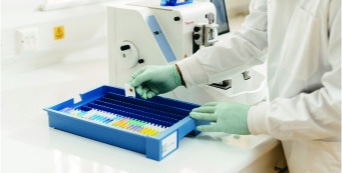
Laboratory work sequence
The classic pathology work sequence involves differentiating between healthy and diseased tissue with the aid of tissue samples and surgical specimens using various working techniques.
At the end of the histological preparation, tissue blocks and microscope slides are produced. These must be stored in a way that makes them retrievable if needed for second opinions, references or consultations. There is a legal requirement to preserve tumor blocks for several years.
Such archiving is rarely taken into consideration during normal workflow, if at all.
Archiving does, however, constitute a considerable part of laboratory work. Tissue block and microscope slides must be sorted following the completion of all other working steps – traditionally this is done alphanumerically – and must be retrievable, after which, they must once again be stored in such a way that they can be found immediately upon request.
Prof. Rüdiger’s laboratory processes 35,000 histological samples and 10,000 cytological tissue samples every year. This equals 140,000 paraffin blocks each year with numbers varying between 300 and 800 per day.
For quality-assurance purposes, even more blocks have needed to be retrieved and re-archived outside of the normal laboratory routine. While normal sorting takes place at times when there is less to do, blocks requested immediately must be located rapidly. Due to fixed processes, there is rarely time for immediate re-archiving, meaning the blocks may be left out of the archives for a period of time. This increases the risk that blocks are later re-archived incorrectly.
Transitioning to Automated Archiving
Paturzo knew that something had to be done to address TJUH’s biggest material management hurdles – detailed and accurate documentation, time management, and patient safety. As the custodian of all material within the TJUH pathology lab, Paturzo is responsible for ensuring her team efficiently locates these invaluable patient samples. She noted an increased frustration within her team regarding the inability to effortlessly retrieve materials, resulting in delayed turnaround times and compromised patient safety. The manual process they were using did not align with the department’s mission to provide accurate patient diagnoses in a timely manner.
«We used to spend half of our time sorting and locating tissue blocks»
Estimates Olga Schwarz, the leading Medical Technical Assistant (MTA) at Prof. Rüdiger’s histology laboratory.
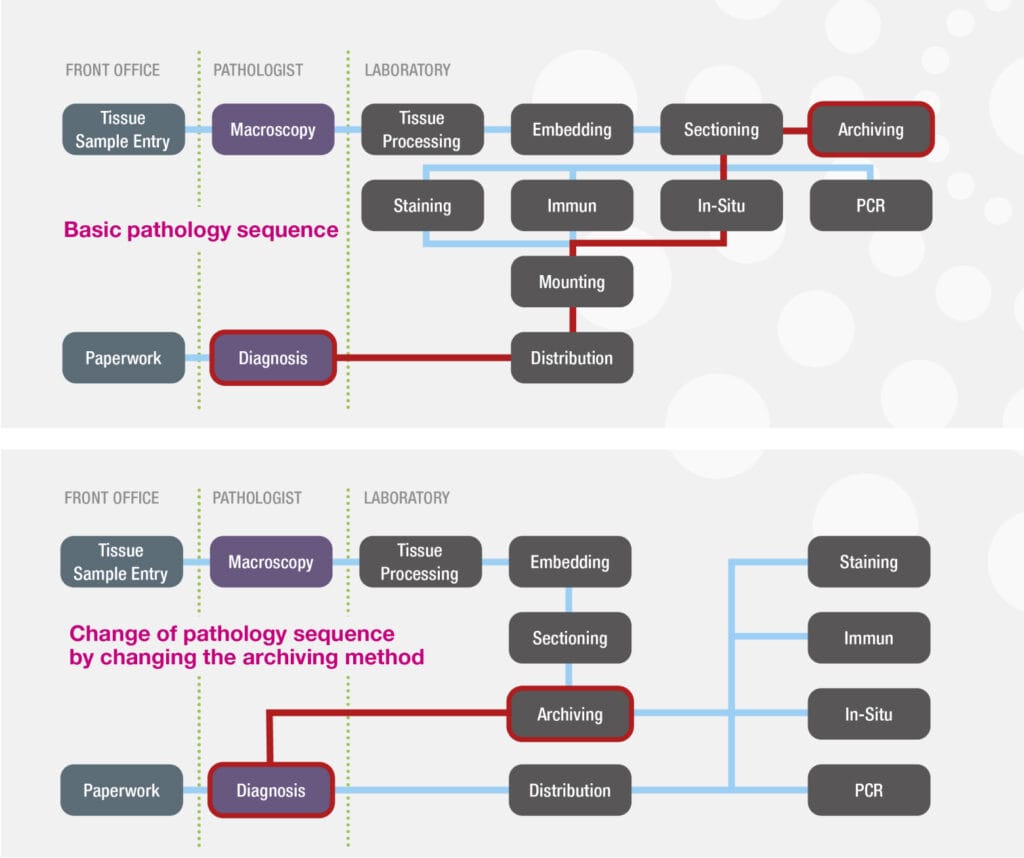
Laboratory routine
A fixed-time sequence is required to ensure diagnoses for clinics and commissioning practitioners are provided on time. All patient tissue samples for immunohistochemical investigation must be embedded, cut and positioned on a microscope slide by 10:00 am. These time requirements are part of “just-in-time diagnostics,” and help to guarantee a problem-free work sequence across the entire diagnostic process, ensuring optimal treatment for patients.
Additional requests for specific blocks are provided to the treating physician at various points during the day. All tissue blocks that cannot be found immediately will result in diagnoses that are late by one day.
Rescheduling patients in order to discuss treatment plans has logistic and psychological impacts that should not be underestimated. It is important to know when a histological diagnosis will be available in order to provide results when the treating physician expects them. At times, the search for misplaced blocks has wasted time, delayed diagnoses, and impacted downstream specialist areas – resulting in a tense atmosphere within the laboratory.
Qualified staff
An aging population and improved diagnostic options have resulted in more tissue samples over the years, and therefore, more paraffin blocks to be archived. This number has increased from 24,000 to 39,000 between 2007 and 2018. This means additional work must be carried out by every employee. This is where continuous improvement processes are applied. Many working steps in the pathology lab are more efficient thanks to automation and refined workflow sequences. However, archiving remains a highly manual, time-consuming and tedious task.
Medical-technical assistants are highly qualified staff with many responsibilities in the laboratory. Sorting and retrieving paraffin blocks is a very monotonous, but highly precise, task that requires reliability and cannot be delegated.
Quality
An important aspect of “just-in-time diagnostics” is continuous quality control – it ensures that results are useable following initial completion and that possible repetitions of working steps do not waste valuable time prior to the treatment of patients. It is uncomfortable to admit that the medical sector is prone to error, that is the case wherever many manual working steps exist.
The solution here is to apply a successful error culture in the sense of “lean error management” – documentation and traceability of working steps, close-loop mutual control and the use of Electronic Data Processing (ECP) wherever possible.
Mistakes can lead to delays in diagnosis or – in the worst case – to an incorrect diagnosis.
Incorrect archiving can lead to misplaced blocks. This may make it impossible to compare tissue from the start of treatment to that from the current state. The rapid development of the various possibilities of targeted tumor therapy makes it necessary to be able to investigate tissue samples for genetic changes even after considerable time. The block is essential for this.
It seems the most-important blocks are always the ones which are lost, as they are used most often and therefore moved around a lot. Often, the person who has sorted the block is not the same one that needs to retrieve it later, which means the pedagogic aspect is lacking.
Overall, manual sorting and retrieving is a process that should be automated and equipped with various security processes in order to save time on diagnosis and treatment, make better use of the limited time of qualified staff, and maintain quality control.
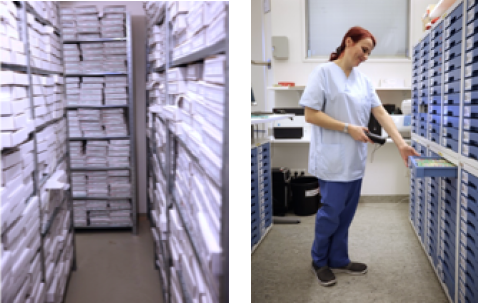
These considerations led the team of the Pathological Institute of the Karlsruhe clinic to reconsider the entire workflow. Many working steps such as drainage, pouring and PCR application, had already been automated over time However, one important, time-consuming step has remained unchanged – archiving. Ideas for the optimization of archiving therefore took center stage of workflow planning.
Archiving Methods
The process of numeric archiving has been the classic, and so far unquestioned, method of archiving tumor blocks for decades. In this digital age, other areas of life that depend on rapid and precise storage and retrievability, such as logistics and warehousing, have used a completely different system – chaos archiving.
In chaos archiving, the element to be archived is deposited in a random location and this location is then recorded on a computer and recalled from there. An advantage is that all manual sorting is omitted. Further, all data relating to queries, storage and retrieval is recorded by the computer and, therefore, documented digitally, adding a further security level.
It is necessary that the elements to be archived are equipped with a barcode that is easy for the computer to read. In the pathology laboratory, printers have been used for microscope slides and cassettes for years – the next step of digitalization is now in sight.
The introduction of the Fina paraffin block management system from Dreampth has made chaos archiving a reality in the histology lab. Paraffin blocks are placed, unsorted, into a special collection tray and their barcodes are read by a scanner (on average this takes two minutes for 240 cassettes). Every cassette is clearly labeled and archived. The tray is allocated a storage location (now a cabinet) by the computer, where it is then stored – that’s it. Space requirements are no greater than with the previous classic system using cardboard cartons.
When retrieving paraffin blocks, the system generates a list of requested blocks that can be transferred to a hand-held scanner. This list provides the exact location of the sample. Following retrieval, the cartridges are scanned as “removed” with the handheld scanner and the computer file is updated.
The greatest advantage of this method is that it is completely traceable. It records who has requested a cassette, who has removed it, at what time, and when it is expected to be returned. Various security levels can be set for the cartridge data, so that only those persons who require access will have it.
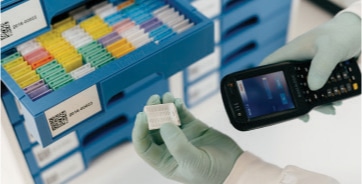
Previously, many important paraffin blocks were stashed in secret hideaways, so that exclusive access was possible. Thanks to the new storage system, every removal is now traceable – and if cassettes are missing, the last user can be identified, supporting the best practice of returning cartridges to the archive after use.
As paraffin blocks are no longer arranged numerically they cannot be located without using the archiving system either – undocumented removal is therefore very difficult.
One unexpected benefit was that laboratory staff who previously disliked this unpopular task now enjoy it – MTA laboratory manager Ms. Schwarz comments: “I would not want to work without it now.”
The next step is the connection of the Fina system to the existing laboratory information system. It will then be possible to issue requests from the desk of the investigating pathologist with the aid of request lists and to send these directly to the held-held scanner in the lab.
Data Security
It is essential that with such heavy reliance on a computer system, existing data is well-protected and secured on several levels. Three different access entitlement levels exist for this purpose – an administrator who can change sequences, a manager who can allocate roles and has access to data, and a user, who can call off cartridges and scan them back in.
Scanned data of the cassette’s position is stored in three different ways: during scanning data is stored directly on the Fina scanner. At short intervals this data is automatically backed up to an in-built USB drive (flash storage) in the Fina unit. Depending on preference of the user, this information can also be transmitted to a hard drive of another computer, to a network, or for storage in the cloud. Irrespective of the system the user remains owner of the data at all times.
Unsolved Problems
The Fina system has solved many problems – but much remains to be done in the laboratory before total efficiency and digitalization of archiving is realized.
In the future, it will be possible to use the Fina system for a possible remote archive and reproduce the storage of blocks in remote archives by means of software.
At this stage, incorporation into a laboratory information system is only a future project. Prof. Rüdiger hopes that it will then be possible to track blocks prior to their first archiving for improved documentation in order to be able to trace handling even sooner. It would be ideal to record who had sectioned the block and when, as well as to record a warning notice when the tissue material of a block has been used up.
The lab is currently evaluating extending their Fina archiving solution for blocks with the Crystal slide management system.
Conclusions
Technicians now have additional time for challenging tasks in the laboratory thanks to the omission of the numeric sorting. There is less stress as the work routine is interrupted by for much shorter periods of time when urgent search requests are received.
The improved documentation of archiving has resulted in a quality increase for the lab. In response to the question of the percentage of blocks that no longer need to be searched for laboratory manager Ms. Olga Schwarz says “Search for blocks? That hardly ever happens these days.”
The laboratory is one step closer to achieving its aim of guaranteeing quality, and therefore to achieving patient safety at the highest level. They suit the motto of the Pathological Institute of the Municipal Clinic Karlsruhe: Efficiency in the service of our patients, commissioners and staff.
«Search for blocks? That hardly ever happens these days.»





